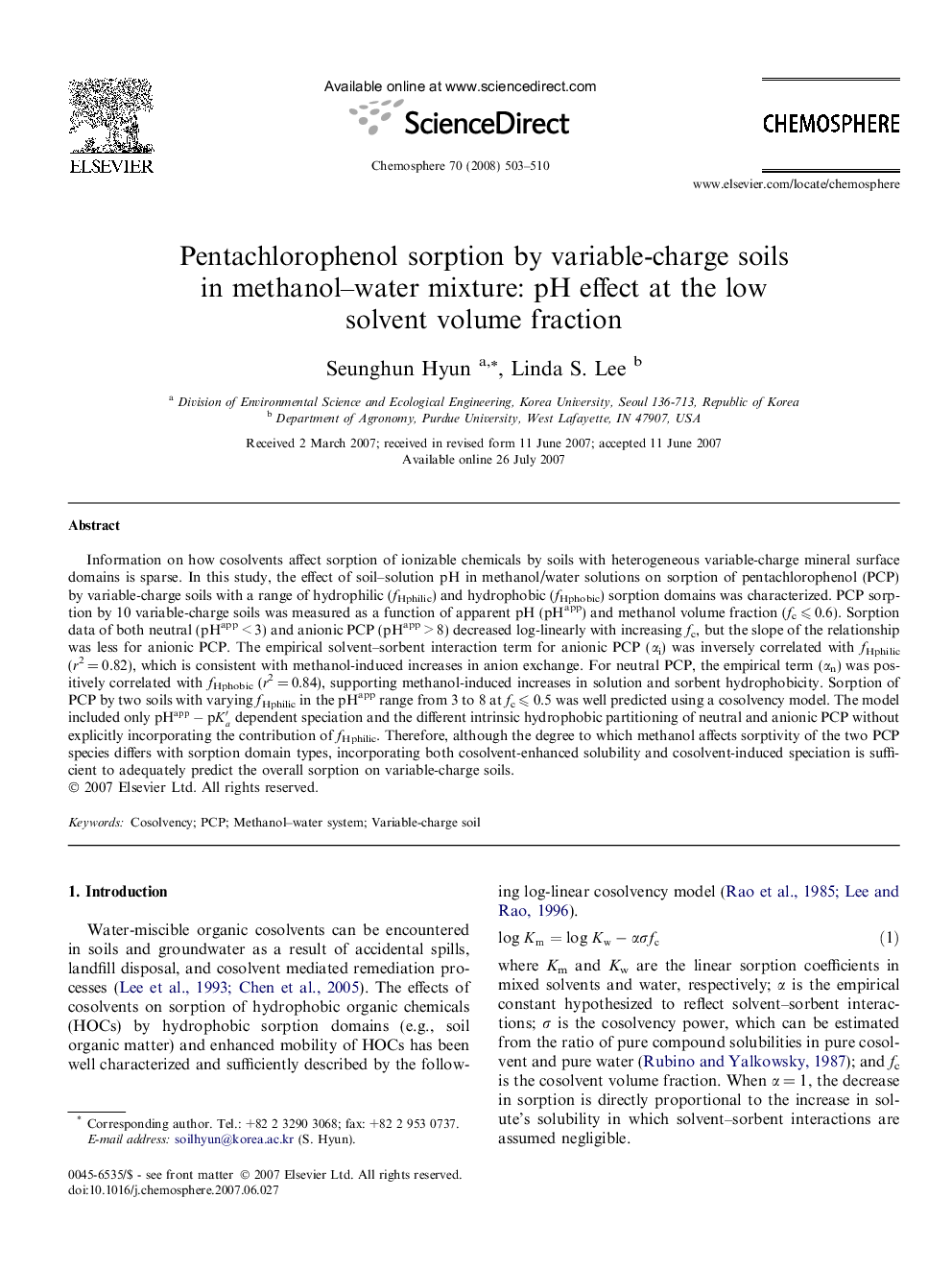| Article ID | Journal | Published Year | Pages | File Type |
|---|---|---|---|---|
| 4414329 | Chemosphere | 2008 | 8 Pages |
Information on how cosolvents affect sorption of ionizable chemicals by soils with heterogeneous variable-charge mineral surface domains is sparse. In this study, the effect of soil–solution pH in methanol/water solutions on sorption of pentachlorophenol (PCP) by variable-charge soils with a range of hydrophilic (fHphilic) and hydrophobic (fHphobic) sorption domains was characterized. PCP sorption by 10 variable-charge soils was measured as a function of apparent pH (pHapp) and methanol volume fraction (fc ⩽ 0.6). Sorption data of both neutral (pHapp < 3) and anionic PCP (pHapp > 8) decreased log-linearly with increasing fc, but the slope of the relationship was less for anionic PCP. The empirical solvent–sorbent interaction term for anionic PCP (αi) was inversely correlated with fHphilic (r2 = 0.82), which is consistent with methanol-induced increases in anion exchange. For neutral PCP, the empirical term (αn) was positively correlated with fHphobic (r2 = 0.84), supporting methanol-induced increases in solution and sorbent hydrophobicity. Sorption of PCP by two soils with varying fHphilic in the pHapp range from 3 to 8 at fc ⩽ 0.5 was well predicted using a cosolvency model. The model included only pHapp-pKa′ dependent speciation and the different intrinsic hydrophobic partitioning of neutral and anionic PCP without explicitly incorporating the contribution of fHphilic. Therefore, although the degree to which methanol affects sorptivity of the two PCP species differs with sorption domain types, incorporating both cosolvent-enhanced solubility and cosolvent-induced speciation is sufficient to adequately predict the overall sorption on variable-charge soils.
